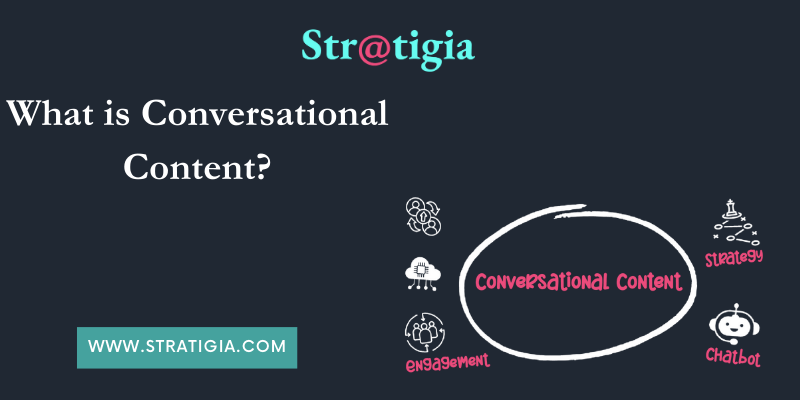Conversational content is a style of writing that mimics natural human conversation, making it more engaging and relatable for readers. Instead of using complex jargon or overly formal language, this approach prioritizes clarity, friendliness, and interactivity. It encourages meaningful interactions by addressing the audience directly, fostering a sense of personal connection.
Importance of Conversational Content
Enhancing Customer Experiences
Conversational content improves the customer experience by making digital interactions feel more human. Whether through blog posts, social media interactions, or chatbot responses, using a friendly, engaging tone helps brands connect with their audience on a deeper level.
Building Relatability and Personal Connection
Brands that adopt conversational content appear more approachable. Instead of sounding robotic or overly promotional, this style allows businesses to engage with their audience genuinely. Using relatable language and storytelling, brands can create stronger emotional bonds with their customers.
Key Elements of Effective Conversational Content
Simple Language Usage
Conversational writing avoids complex words and industry jargon. Instead, it focuses on clarity and readability, making the message accessible to a broader audience.
Casual Tone Maintenance
A casual yet professional tone makes the content more inviting. Writing in a way that mirrors everyday speech helps to build rapport with the audience.
Engaging Questions Inclusion
Asking questions within content encourages engagement. Phrases like “Have you ever wondered…?” or “What do you think?” invite readers to participate in the conversation.
Direct Addressing of the Audience
Using words like “you” and “we” makes the content feel more personal and inclusive. This direct approach makes readers feel like they are part of the discussion rather than just passive consumers.
Forms of Conversational Content
Chatbots
AI-powered chatbots respond immediately to user inquiries, simulating a real conversation. When programmed effectively, they create a seamless and interactive experience for customers.
Social Media Interactions
Brands that actively engage with followers on social platforms through comments, polls, and direct messages build stronger relationships. This form of conversational content fosters community and trust.
Interactive Quizzes
Quizzes encourage participation by offering personalized results based on user input. These tools make the content engaging and increase the time spent on a website.
Strategies for Creating Conversational Content
Prioritizing Follower Engagement
Replying to comments, messages, and reviews in a natural, conversational tone helps maintain strong relationships with the audience.
Utilizing Short-Form Videos
Platforms like TikTok, Instagram Reels, and YouTube Shorts thrive on short, engaging videos that are conversational. These videos feel more authentic and encourage higher engagement.
Personalization Techniques
Personalizing content with customer data enhances the conversational experience. Personalized emails, product recommendations, and customized responses show users that the brand values their preferences.
Explore Content Marketing Services to craft compelling and interactive brand messaging.
Benefits of Conversational Content for Brands
Boosting Customer Trust
People trust brands that communicate like real humans rather than faceless corporations. Conversational content helps establish authenticity and credibility.
Driving Conversions
When content feels personal and engaging, users are more likely to act—such as signing up for a newsletter, purchasing, or sharing content with their network.
Best Practices for Conversational Writing
Understanding Your Audience
Knowing your audience’s preferences, pain points, and communication styles ensures conversational content resonates with them.
Adapting to Different Platforms
Each platform has a unique tone. For example, Twitter requires brevity, while LinkedIn demands a more professional approach. Adapting content accordingly maximizes effectiveness.
Balancing Informality with Professionalism
Conversational writing doesn’t mean disregarding professionalism. It’s about striking the right balance—being friendly yet maintaining credibility.
Leveraging Automation in Conversational Content
Chatbot Implementation
Chatbots streamline customer interactions by providing instant responses while maintaining a conversational tone.
AI-Driven Engagement Tools
AI-driven tools analyze customer behavior and generate responses that align with user preferences, making automated interactions feel more human.
Frequently Asked Questions
What makes content conversational?
Conversational content mimics natural human speech, using simple language, a friendly tone, and engaging questions to encourage interaction.
Why is conversational content effective?
It builds trust, improves engagement, and makes digital interactions feel more human, leading to stronger customer relationships and increased conversions.
How can I incorporate conversational content into my brand?
Use direct, relatable language in blog posts, emails, social media, and chatbot interactions. Encourage engagement through questions and personalized messaging.
Final Thoughts
Conversational content transforms the way brands interact with their audience. By embracing a more human and engaging approach, businesses can foster stronger connections, enhance user experience, and drive meaningful interactions. Adopting conversational content strategies helps brands stand out in a crowded digital space, making their messaging more relatable and impactful.
Boost your brand’s authenticity with SEO Content Writing to improve engagement and search rankings.




